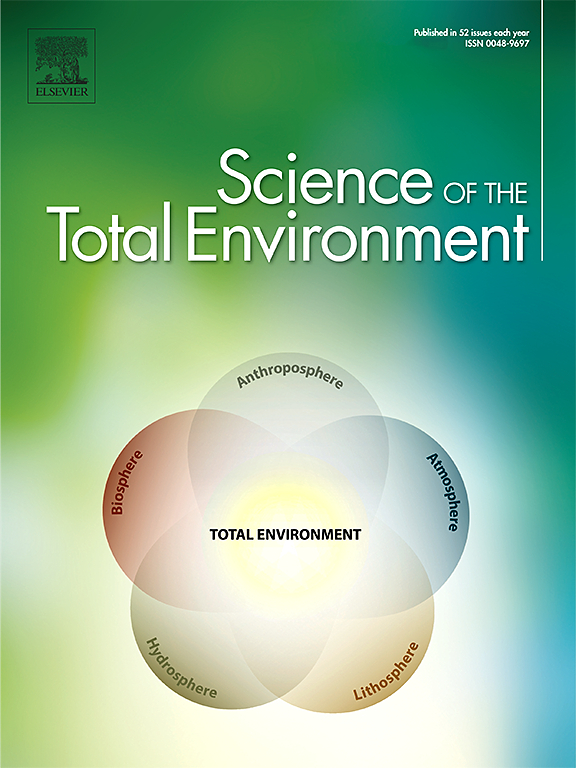Aqueous compost extracts with stabilized biofertilizing microbiota promote plant root growth and drought resilience
IF 8.2
1区 环境科学与生态学
Q1 ENVIRONMENTAL SCIENCES
引用次数: 0
Abstract
The excessive use of agrochemicals has caused significant negative environmental impacts, highlighting the growing need for more sustainable alternatives. Among these, aqueous composts extracts enable less harmful intensive agricultural practices. The objective of this study was to explore methods for stabilizing the biofertilizing microbiota of compost extracts and to evaluate their effects on drought and oxidative stress. For this, an aqueous extract was prepared from agri-food waste compost by suspending it in water at a 1:5 ratio and incubating the mixture for 14 days at room temperature. The physicochemical properties of the extract were analyzed. In addition, microorganisms associated with the biofertilizing capacity of the extract, which was formulated with various compounds were monitored over the course of one month storage at different temperatures. The bioformulations showing better biofertilizing potential were selected for testing on cucumber seedlings to evaluate their capability for promoting plant growth and alleviating oxidative stress. Additionally, a drought stress test was conducted on grass to evaluate the effect of applying the extract. The results of the physicochemical characterization and bacterial abundance showed a good nutritional composition and a rich microbiota with biofertilizing activity. In terms of microorganism counts under storage conditions, the most stable formulations were those formed by the extract supplemented with 2 % glycerol, as well as the extract without supplement (as extracted). Cucumber seedlings treated with the more stable extracts exhibited enhanced agronomic traits, particularly improved root development, and reduced oxidative stress. The root-promoting effect was also observed in the drought stress test, where grass seedlings subjected to 30 % soil moisture and treated with a combination of the extract with chemical fertilizer presented greater root development (around 5.50 g cm−3) compared to treatments lacking the extracts (around 2–3.30 g cm−3). These results suggest that aqueous compost extracts provide drought resistance and increased root development, offering a promising alternative to conventional mineral fertilization.

求助全文
约1分钟内获得全文
求助全文
来源期刊

Science of the Total Environment
环境科学-环境科学
CiteScore
17.60
自引率
10.20%
发文量
8726
审稿时长
2.4 months
期刊介绍:
The Science of the Total Environment is an international journal dedicated to scientific research on the environment and its interaction with humanity. It covers a wide range of disciplines and seeks to publish innovative, hypothesis-driven, and impactful research that explores the entire environment, including the atmosphere, lithosphere, hydrosphere, biosphere, and anthroposphere.
The journal's updated Aims & Scope emphasizes the importance of interdisciplinary environmental research with broad impact. Priority is given to studies that advance fundamental understanding and explore the interconnectedness of multiple environmental spheres. Field studies are preferred, while laboratory experiments must demonstrate significant methodological advancements or mechanistic insights with direct relevance to the environment.
 求助内容:
求助内容: 应助结果提醒方式:
应助结果提醒方式:


